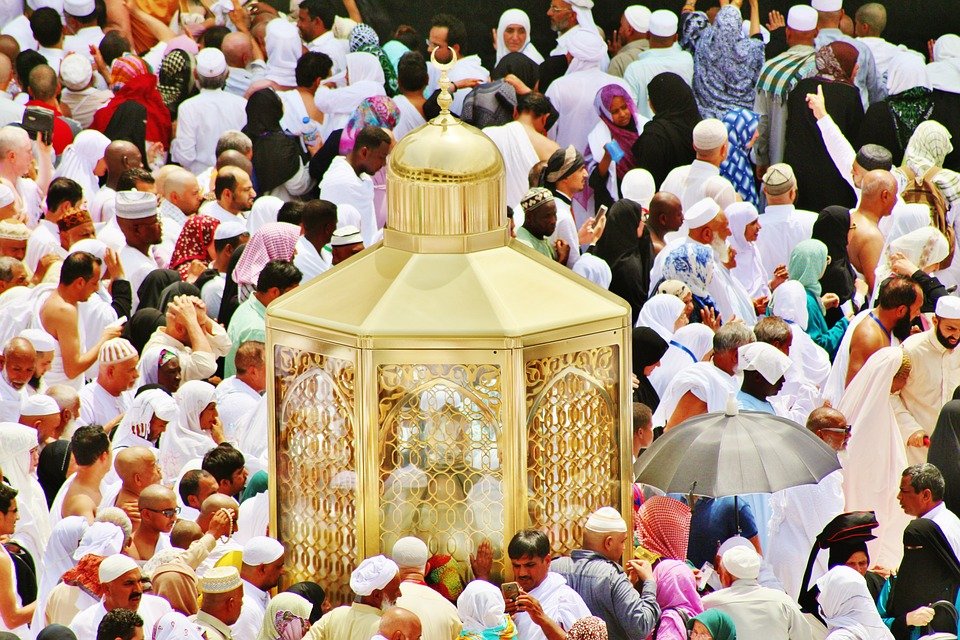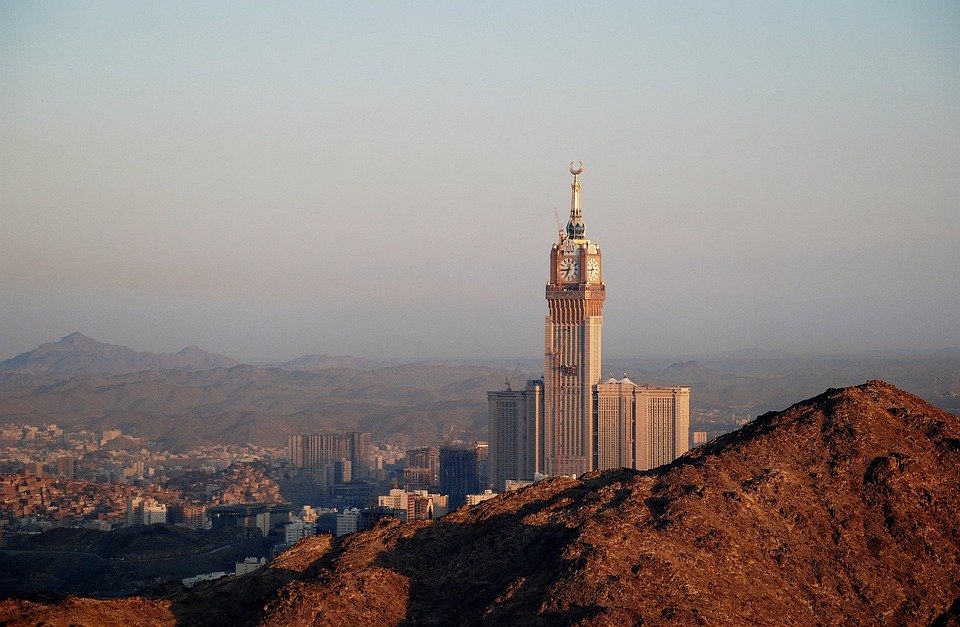You are here to read: Why Do We Throw Rocks in Hajj? Meaning and Significance Explained – A Thoughtfully Written Guide Offering Spiritual Wisdom and Travel Advice for Every Pilgrim who is going on holy journey of Hajj or Umrah.
In this article, we explore the question: “Why do we throw rocks in Hajj?” This ritual is one of the key components of the Islamic pilgrimage, Hajj, and holds significant meaning for millions of Muslims around the globe. I think understanding this practice is crucial, not just for participants but for anyone interested in the rich traditions of Islam. In the next few paragraphs, I promise to provide a comprehensive guide that will explain the reasons behind this act and its deep-rooted significance.
I feel that the act of throwing rocks during Hajj symbolizes the rejection of evil and the temptation of sin. Each stone thrown is a reminder of our commitment to faith and righteousness. As experts with nine years of experience in the Umrah and Makkah travel field since 2016, we recognize the importance of conveying this ritual’s message. Understanding “Why Do We Throw Rocks in Hajj? Meaning and Significance Explained” is essential for anyone wishing to grasp the full essence of this sacred pilgrimage. Let’s uncover the layers of meaning behind this powerful act.
What Happens During Hajj?
Hajj is a special pilgrimage that millions of Muslims undertake every year. It’s not just a trip; it’s a significant spiritual experience. This holy journey takes place in the city of Makkah, where pilgrims gather to perform a series of rituals. By participating in these rituals, individuals seek to draw closer to God and cleanse their souls.
Every year, during the month of Dhul-Hijjah, people from around the globe make their way to this sacred city. They come in all shapes and sizes, uniting with a common purpose: to fulfill one of the Five Pillars of Islam. Each action during Hajj has a beautiful meaning, and every step brings pilgrims closer together with their faith and one another. Can you imagine standing alongside people from different countries, all dressed in simple white garments? It’s a sight that reflects the equality of humanity.
Throwing Rocks: What’s the Meaning?
One of the most fascinating rituals of Hajj is the act of throwing stones at three pillars known as the Jamaraat. This might sound strange, but it carries deep significance. The pillars represent Satan’s temptation of Prophet Ibrahim (Abraham) when he was asked to sacrifice his son. By throwing rocks, pilgrims symbolically reject temptation and evil. It’s like saying, “No, I won’t give in!”
As we stand there throwing stones, we are reminded of our own struggles against temptation in life. It’s a powerful moment when we physically act out our desire to stay true to our faith. I believe this ritual serves as a way for everyone to reflect on their personal challenges. It teaches us that, even in our daily lives, we can face our demons, be they doubts or fears.
The Stones: More than Just Rocks
While it might seem simple, the stones hold deeper meaning. Pilgrims collect pebbles to throw during the ritual. These stones are not just any rocks; they symbolize our shortcomings and struggles. When we hurl them at the pillars, we release our burdens and let go of negativity. I think this act helps to purify our hearts.
You're at the middle of this awesome post at AirlinkHajjandUmrah.com through: Why Do We Throw Rocks in Hajj? Meaning and Significance Explained. Keep reading, it gets better!
Imagine picking up those stones along the way. Each stone represents a challenge you’ve faced or a sin you’ve committed. By tossing them, you’re letting go of what holds you back. It’s like clearing your mind and starting fresh! This connection to the stones empowers us, allowing individuals to feel stronger in their faith. It’s a moment of catharsis, reinforcing the belief that we can overcome any obstacle.
The Ritual’s Importance in Islamic Faith
The act of throwing stones deeply intertwines with the Islamic faith. It signifies our struggle against evil and serves as a reminder of Prophet Ibrahim’s faith and obedience to God. When throwing the stones, we are honoring his legacy. It encapsulates submission to God’s will, teaching us the importance of devotion.
In a world filled with distractions and temptations, this ritual serves as a grounding moment. It brings us back to what truly matters in our lives. I feel that the ritual invites us to reaffirm our commitment to steer clear of negative influences. The collective act emphasizes unity among pilgrims, as each of us participates in this age-old practice and collectively rejects wrongdoing.
How is This Ritual Performed?
The ritual takes place in Mina, where the Jamaraat stands tall. Pilgrims gather there, eagerly awaiting their turn to throw stones. It usually happens over a few days of Hajj, particularly during Eid al-Adha. The excitement is palpable as everyone prepares for the act. Each person holds pebbles, often collected meticulously beforehand, ready to let them fly.
The atmosphere is charged with emotion and faith. There’s a sense of camaraderie; regardless of background or nationality, all pilgrims are united in this act of devotion. I think this togetherness makes the ritual even more poignant. When one pilgrim throws a stone, it’s not just a singular action; it echoes the spirits of millions before them, creating a bond through generations.
Lessons Learned from Throwing Rocks
Throwing stones teaches valuable life lessons. It reminds us that everyone faces challenges, and we must actively confront them. Rather than ignoring difficulties, we’re encouraged to address them head-on. In the same way we toss stones, we should not shy away from our struggles but instead face them with fortitude.
Additionally, this ritual teaches us about collective responsibility. When we stand there, shoulder to shoulder with others, we realize that we are part of something much bigger. Just like those stones, our actions can impact those around us. It encourages us to support each other in our own battles. In my opinion, the ritual is a lesson not just for Hajj, but for life as we strive to be better individuals.
Conclusion: Beyond the Rocks
In conclusion, throwing rocks during Hajj is about much more than the act itself. It’s a deeply spiritual gesture filled with meaning and significance. Through this ritual, pilgrims connect to their faith, their community, and their personal struggles. It encapsulates the essence of Hajj, teaching lessons of resilience, unity, and devotion.
As we reflect on the act of throwing stones, we can take these lessons into our everyday lives. Whether we are facing personal challenges or supporting our friends through tough times, we can always find the strength to confront our fears. I believe that the ritual reminds us of our power over negativity, transforming what could be burdensome into something freeing. In this way, the act of throwing rocks remains a symbol of faith, hope, and unity.
That wraps up Why Do We Throw Rocks in Hajj? Meaning and Significance Explained. Thanks for sticking with us till here! Share this: Why Do We Throw Rocks in Hajj? Meaning and Significance Explained with your friends.
Check our homepage at Air Link Hajj & Umrah for more awesome updates.
Some interesting posts are: 1: Umrah Mubarak, 2: When is Umrah closed 2026?, 3: When does Umrah start after Hajj 2026?
Mushu, an experienced Saudi Arabia traveler and writer, shares insightful tips and spiritual reflections to enhance Hajj and Umrah journeys for fellow pilgrims. He has been to Makkah and Madina from 2016 to 2023 many times and his posts will reflect this.







